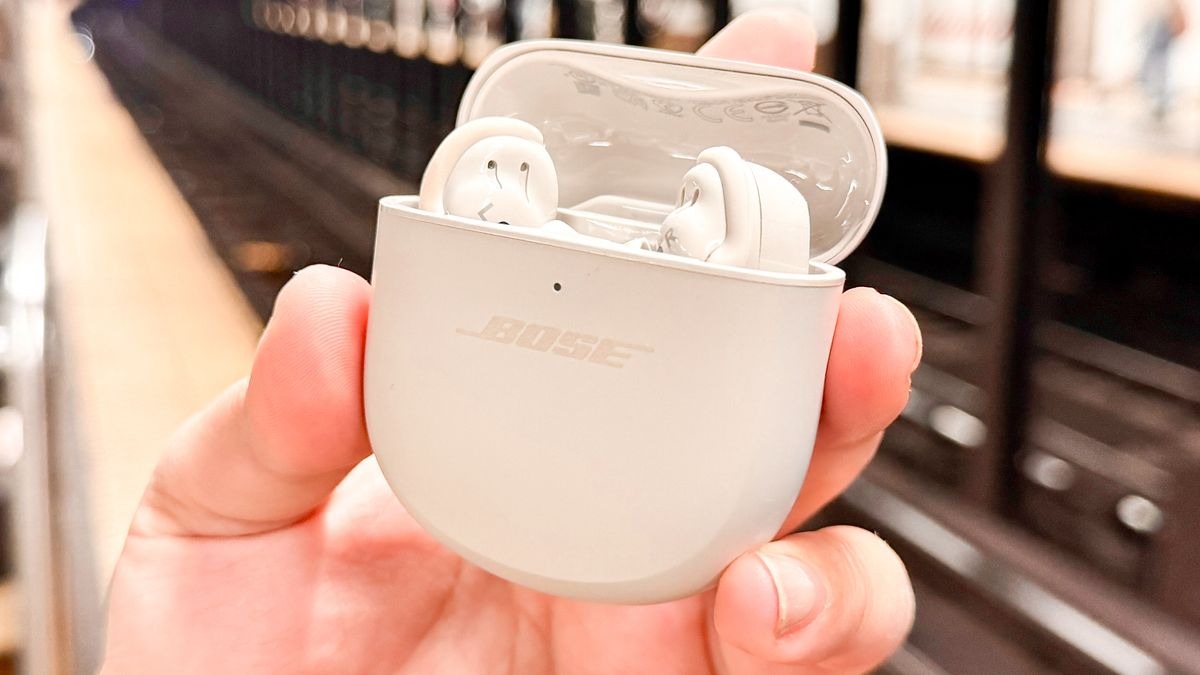Bose QuietComfort Ultra Earbuds review: Spatial audio makes all the difference
Most manufacturers of headphones and headphones are starting to skip the annual update cycle. Of course, many of them regularly release a new model, but when it comes to reviewing a previous product, the deadlines tend to be longer. Bose made an exception, choosing to present the QuietComfort Ultra headphones (299) alongside the new QuietComfort Ultra headphones a year after their predecessor. The new headphones offer a familiar design and the same excellent active noise cancellation (ANC), but the company also promises a great improvement in sound quality with its new immersive audio technology. For the same price as the set they replace, the QC Ultra headphones offer spatial sound without having to broadcast special content.
Design
Bose has made minimal changes to the design, essentially keeping the same formula as the QuietComfort II headphones. A major difference is the touchscreen on the outside, which is now silver in color instead of matching the headphones (which were black, gray or white). It’s still plastic, but it’s just a different shade. Secondly, the company has modified the “stability strips” or matching wings to make them easier to install correctly. This is a welcome update because it was a problem with the QC Earbuds II to set them up safely.

With an almost completely identical design From one model to another, Bose has not reduced the size of the headphones. This means that they are still quite big at a time when much of the competition is getting smaller and smaller. But the disadvantage is that the outer touch screen is larger than the smaller models from other manufacturers. This translates into more reliable control of the QC Ultra headphones and allows Bose to enter a special swipe gesture for volume control, which is rare in this category.
Software and features
All the features of the QuietComfort Ultra headphones can be accessed via the Bose Music app. Here the company gives you battery percentages for each bud and a volume catch at the top of the main screen. At the bottom, you can access the controls to toggle the listening modes (ANC, transparency and immersive audio), the equalizer, the detailed settings, the headphone spill test and the options to reconfigure the shortcut gesture.
Under immersive audio, the application allows you to switch in the middle stop, freeze frame and motion modes. They are pretty self-explanatory, but I want to point out that the motion setting keeps the sound in front of you when you move, so that music, movies and other content don’t stay in a permanent place or seem to come from the back or from your pocket when you leave your desk. And since Bose allows you to reconfigure the long press on the headphones, you can choose if one side goes through the immersive audio modes while the other is set to Shuffle via ANC (silent), transparency (conscious) and Immersive.

Sound quality
Bose’s new Immersive Audio is a big step ahead for the sound quality of the company’s headphones. The QuietComfort II headphones and the QuietComfort Ultra headphones sound great right out of the box. But with this Ultra model and its spatial audio technology, Bose finally has the sound capabilities to compete with comparable products from Sony and Sennheiser. And the best part is that you don’t need any specially created content or a specific streaming service to unlock it. Immersive Audio works with everything, no matter where you play it from.
Like most implementations of Spatial Audio, the Bose Version takes the standard setting and makes it louder. The sound has more presence and noticeably more volume, but also more clarity and detail. The company claims that it achieves this thanks to virtualization technology, which tries to eliminate the feeling that the sounds from the headphones are in your head. Instead, it seems that you are sitting in the “Acoustic Sweet Spot” with speakers in front of you. The result is not only the feeling that you are not wearing the headphones at all, but also an extremely natural sound that is immersive without having to be dimensional to make an impact.

I noticed the biggest difference in the middle the Stock setting and the immersive Audio on acoustically powered albums like Zach Bryan’s eponymous release, Gregory Alan Isakov’s Appaloosa Bones and Noah Kahan’s Stick Season. All three are able to exploit the effect of Bose’s spatial sound sufficiently to sometimes give the impression that Zach Bryan is sitting right in front of them and choosing his guitar. If it’s just strings and a voice, you can really hear what Bose has achieved, but it doesn’t just work for Country folk or singer/songwriter ballads. You can clearly hear the influence of immersive Audio in a number of genres, including metal, Hip-Hop and electronic music. At first you realize that it is louder, but after the initial shake, the amplified details such as the texture in the distorted guitars and synths, as well as the reverb on the drums and the layered instruments, become more obvious.




Post Comment